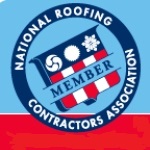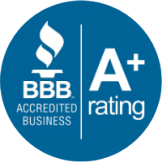Long Island Roofing: Article About Roof Components
This sheathing, or decking, reduces the heat gain within the home during the summer. They work by reflecting radiant heat that comes from the sun away from the living space within the home. While they are usually installed during the construction of new homes, they can be installed in older homes.
Long Island roofing FAQ: Can I install and repair my own roof?In short, yes. Homeowners can install and repair their own roofs. However, there is a certain amount of risk involved if you are not particularly handy or don't have some knowledge of how roof systems work. Additionally, a bad roofing job could spell disaster for your home and may result in a professional roof replacement. It is recommended that, if you do not have experience or do not like heights, that you at least discuss the project with a professional roofing contractor before you begin.

When it comes to your home, your roof is one of the most important structural elements. Not only does your roof play a major role in your home's aesthetic design, it also protects you, your family and your possessions against the environment. Having a good understanding of how your roof works can be a major advantage when it needs an inspection or repairs.
In most cases, as long as you are relatively handy, you can determine what materials went into the making of your roof. However, a Long Island Roofing contractor can also answer any questions that you may have about your roof.
Decking, also known as sheathing, is the first component to be put down over the bare rafters. These panels are ultimately what the shingles or tiles will be attached to. The decking is usually made from plywood or oriented strand board. Homeowners can also keep their homes cooler in the summer by installing radiant barrier sheathing, which uses a reflective aluminum surface to reflect the heat coming into the home from the sun.
The second component of your roof that is put down is the underlayment, a material that is made from plywood covered by black paper.
A roofing professional from Long Island Roofing can answer any question you have about architectural roofing or flat roofs.
This component provides the water-proof protective layer for the decking or sheathing and creates a seal for the home against the outside environment.
The third component that is laid down is the flashing. These are metal pieces that are installed in places on the roof where water might collect. They help divert this water back to the sections of the roof that will take the water away. Flashing can be made from a wide range of materials, including stainless steel, galvanized alloy or copper.
Next, depending upon what your roof is made out of, shingles or tiles are installed over the flashing and underlayment. While shingles or roof tiles can add to your home's aesthetics, they also serve a practical purpose by keeping wind, rain and other severe forms of weather from damaging your home's structure. Although asphalt and tile shingles are the most common, the outer-most roof layer can also be made from metal or even solar panel shingles.
Finally, the last main component of the roof itself is the trim an the drip edge. The trim, or fascia, sits at the end of the eaves and covers the rafters. Additionally, if your roof has gutters, they are attached to the fascia. The drip edge is a term referring to the edge of the roof that lets the water that is falling run off clear of any underlying structure.









